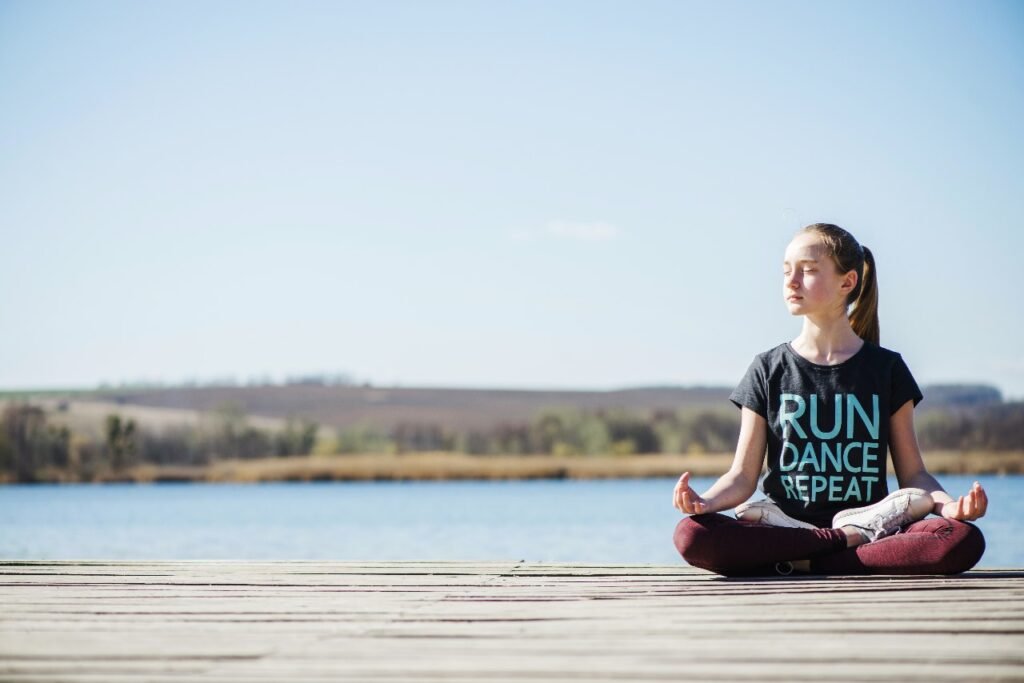
Introduction: Why Yoga and Meditation Matter Today
In today’s busy and often stressful world, many people are searching for ways to find balance — not just physically, but mentally and emotionally too. Yoga and meditation offer a powerful, holistic approach that connects the mind and body, improving health in ways conventional exercise alone cannot.
Whether you want to increase flexibility, reduce anxiety, or cultivate mindfulness, yoga and meditation provide tools to support your overall wellness. This blog will explain their benefits, simple techniques to get started, and tips for creating a daily practice.
The Benefits of Yoga for Body and Mind
Yoga is more than stretching — it’s a full practice that combines physical postures, breathing exercises, and meditation to enhance your well-being.
Physical Benefits
- Improves flexibility and joint mobility
- Builds muscle strength and tone
- Enhances balance and posture
- Supports cardiovascular health through gentle movement
- Increases body awareness and coordination
Mental and Emotional Benefits
- Reduces stress and anxiety by calming the nervous system
- Improves focus, concentration, and mental clarity
- Encourages emotional balance and resilience
- Promotes better sleep quality
- Fosters a sense of inner peace and self-acceptance
Getting Started with Beginner Yoga
Starting yoga can be simple. You don’t need expensive classes or equipment — just a quiet space and comfortable clothing.
Basic Yoga Poses for Beginners
- Child’s Pose (Balasana)
A restful pose that gently stretches the back and hips. Great for relaxation and breath awareness. - Cat-Cow Pose (Marjaryasana-Bitilasana)
Warms up the spine with gentle flexion and extension. Helps improve posture and relieve tension. - Downward Facing Dog (Adho Mukha Svanasana)
Stretches the hamstrings, calves, and spine. Builds upper body strength. - Warrior I & II (Virabhadrasana I & II)
Strengthens legs and core while improving balance and focus. - Corpse Pose (Savasana)
A final relaxation pose that allows the body to absorb the benefits of the practice.
Tips for Practicing Yoga Safely at Home
- Move slowly and listen to your body
- Use props like a yoga block or towel if needed
- Focus on breathing deeply and steadily
- Avoid pushing into pain or discomfort
- Follow guided videos from trusted sources if you need direction
Introduction to Meditation: Calming the Mind
Meditation complements yoga by training your mind to be present and calm. Regular meditation can help reduce stress, improve emotional well-being, and sharpen your focus.
Simple Meditation Techniques for Beginners
- Breath Awareness
Focus your attention on the natural rhythm of your breathing. When your mind wanders, gently bring it back. - Body Scan
Mentally scan your body from head to toe, noticing areas of tension and consciously relaxing them. - Guided Meditation
Use recorded audio or apps to follow a guided practice, helpful for beginners who want structure. - Mantra Meditation
Silently repeat a calming word or phrase to anchor your focus.
How to Start Meditating
- Begin with 5 minutes a day and gradually increase
- Choose a quiet, comfortable space
- Sit upright but relaxed, or lie down if necessary
- Practice daily, ideally at the same time
Creating a Balanced Yoga and Meditation Routine
Combining yoga and meditation can deepen your practice and improve results. Here’s a sample beginner routine you can try:
Morning Routine (15–20 minutes):
- 5 minutes deep breathing and gentle stretching
- 10 minutes basic yoga poses (Child’s Pose, Cat-Cow, Downward Dog, Warrior poses)
- 5 minutes seated meditation focusing on breath
Evening Routine (10–15 minutes):
- 5 minutes gentle yoga to release tension
- 5–10 minutes meditation or body scan to prepare for restful sleep
Overcoming Common Challenges
- Busy Mind: It’s normal for your thoughts to wander during meditation. Practice patience and gently refocus.
- Physical Limitations: Modify poses or try chair yoga if mobility is limited.
- Inconsistency: Set reminders or integrate practice with daily habits to build routine.
- Expectations: Focus on how you feel during and after practice, not on “perfect” poses.
Why Yoga and Meditation Are Essential in Modern Life
Integrating these practices helps you manage stress, maintain physical health, and cultivate a peaceful mind. Unlike high-intensity workouts, yoga and meditation nurture sustainable wellness, suitable for all ages and fitness levels.
They encourage you to slow down, breathe deeply, and connect with yourself — benefits that extend beyond the mat into every part of your life.
Conclusion
Yoga and meditation are accessible, adaptable, and effective tools for improving your physical and mental health. By starting small, staying consistent, and listening to your body and mind, you can build a rewarding practice that supports your fitness goals and overall well-being.
Take the first step today. Your body and mind will thank you.
